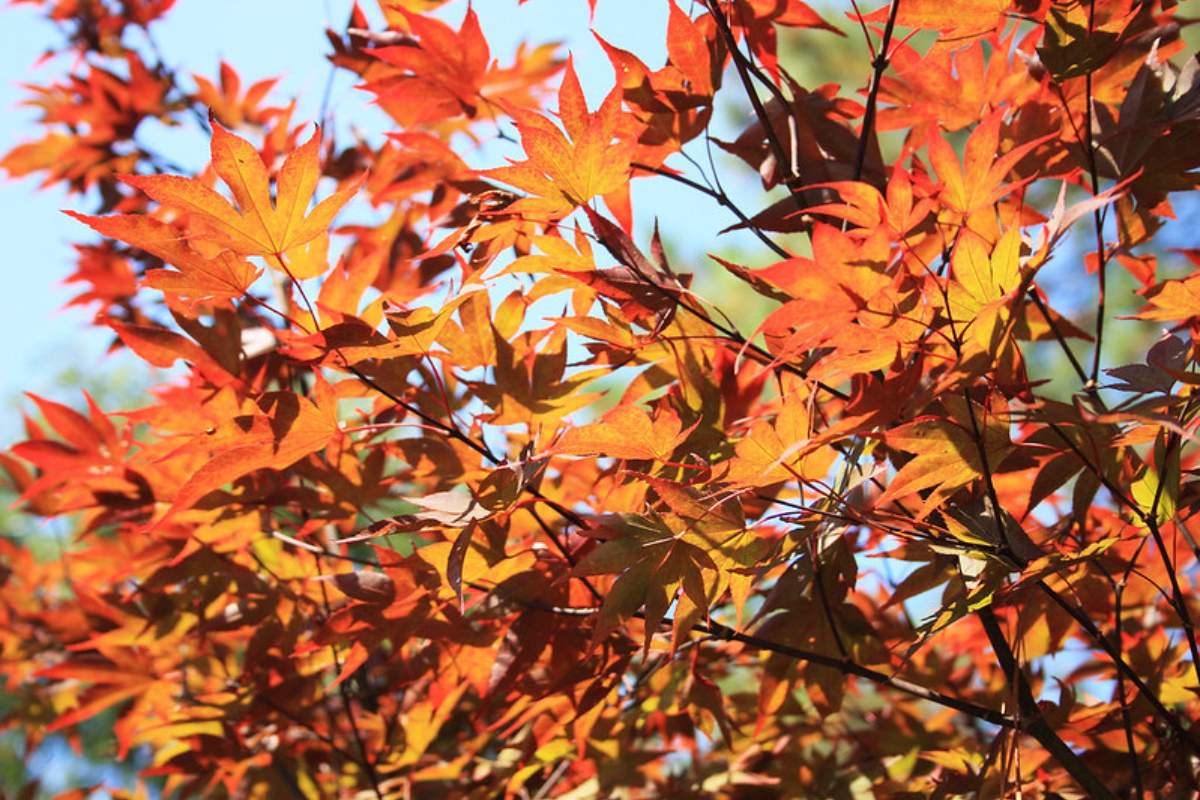There are over a thousand named types of Japanese maples, and while they’re native to Japan, Korea, and China, some of these species can be found in the United States as popular landscaping trees. These deciduous trees lose their leaves each year and can be seen in the spring growing beautifully colored leaves that change with the seasons.
They range in size and appearance so there are really so many options for someone looking to buy a Japanese maple. This article will give you an overview of some of the Japanese maple trees that you can find for sale at nurseries and in yards all over the United States!
21 Types of Japanese maples
What is a Japanese Maple tree?
Japanese maple trees are lovely, delicate plants with a long history. The leaves of this tree are a deep, vibrant red color that varies depending on the time of year. These maple trees can grow to be anywhere between 10 and 20 feet tall and wide, making them ideal for smaller spaces or adding color to an already established landscape.
1. Crimson queen
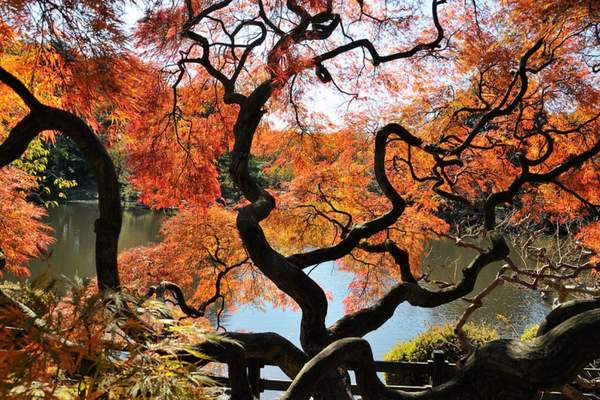
- Latin: Acer palmatum var. dissectum ‘Crimson Queen’
- Zone: 5-8
- Height: 8-10 ft
- Spread: 10-12 ft
- Sun: Full sun/partial shade
- Bloom color: Dark red/scarlet
- Maintenance: Low
Crimson Queen trees are one of the most popular Japanese maple varieties known for their stunning appearance, which can serve as the focal point of a beautiful landscape. This maple tree grows best in areas with warm summers, cool winters, and well-drained soil.
As their name implies, Crimson Queen trees have leaves that change from a deep red to burgundy color in the summer to a captivating scarlet color in the fall. It works best in gardens with small amounts of space but still desires to have a magnificent tree in it.
2. Bloodgood
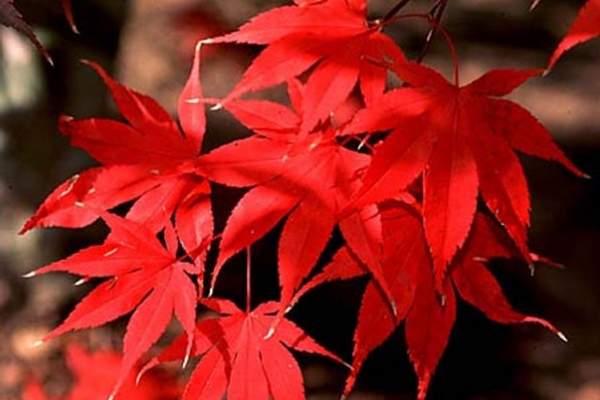
- Latin: Acer palmatum ‘Bloodgood’
- Zone: 5-8
- Height: 15-20 ft
- Spread: 15-20 ft
- Sun: Full sun/partial shade
- Bloom color: purple/burgundy/crimson
- Maintenance: Low
Bloodgood is a prize-winning purple-leaved Japanese maple that has captured the hearts of many gardeners. It’s also known for its dark red-black bark, which is especially noticeable in the winter, and for its lovely leaves, which are purple in the spring, burgundy in the summer, and crimson in the fall.
These trees thrive in moist, well-drained, slightly acidic soil. During the spring season, the purplish-red flowers of this tree can be seen. These are then followed by elongated red fruits.
3. Red dragon
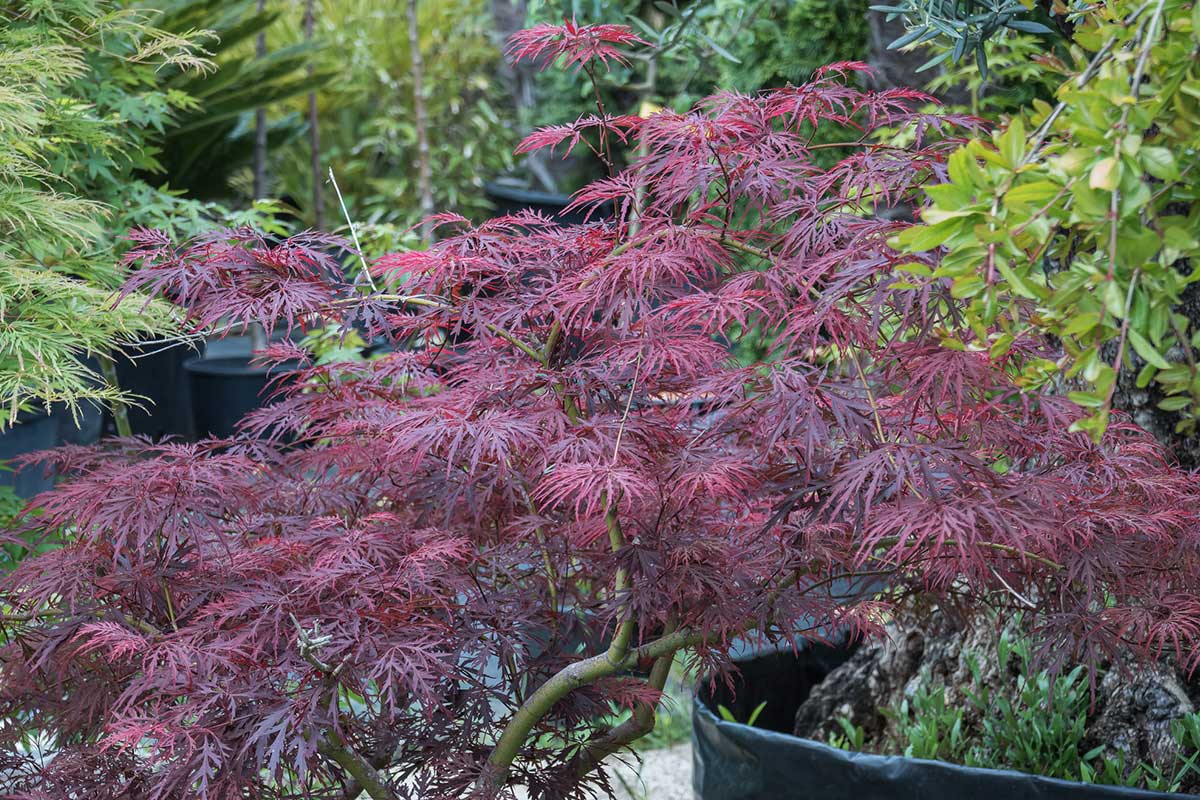
- Latin: Acer palmatum var. dissectum ‘Red Dragon’
- Zone: 5-8
- Height: 8-10 ft
- Spread: 8-10 ft
- Sun: Full sun/partial shade
- Bloom color: Red/scarlet
- Maintenance: Low
Red dragon, also known as laceleaf maple, is a popular plant for landscaping around homes and businesses. These maple trees are deciduous, meaning they lose their leaves in the autumn. They thrive in well-drained soils with plenty of sunlight, but will tolerate partial shade.
The changing colors of the leaves are what make this tree interesting. The leaves are bright red in the spring and turn a darker hue as the summer season approaches. When the fall season arrives, it’ll turn a scarlet color.
4. Coral bark
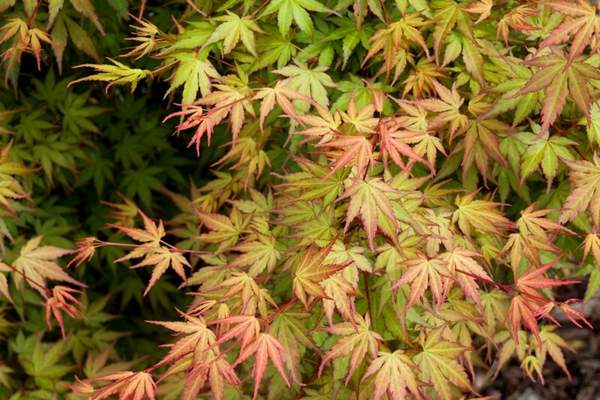
- Latin: Acer palmatum ‘Sango-kaku’
- Zone: 6b-8a
- Height: 15-20 ft
- Spread: 10-15 ft
- Sun: Full sun/partial shade
- Bloom color: Gold/red
- Maintenance: Low
Coral bark is a type of maple tree that can be seen growing in the gardens of the United States. It’s a lovely, magnificent tree that can grow to be 10 feet tall. It has a bright red bark and leaves that change color from green to gold and red in the fall.
It’s also a favorite because it’s simple to grow and requires little maintenance. The tree thrives in full sun or partial shade, as well as moist, well-drained soil. Coral bark is resistant to the majority of pests and diseases.
5. Butterfly variegated
- Latin: Acer palmatum ‘Butterfly’
- Zone: 5-8
- Height: 7-12 Feet
- Spread: 4-8 Feet
- Sun: Full sun/partial shade
- Bloom color: Deep scarlet
- Maintenance: Low
Though it originated in Korea and Japan, this lovely and distinctive Butterfly variegated maple tree is now common in the United States. It grows best in full sun, but it can also tolerate partial shade. Depending on the growing conditions, the tree can reach heights of up to 12 feet.
Butterfly variegated leaves have 5 to 7 pointed lobes and an iridescent appearance. In the spring, the color of these leaves can range from green to creamy white with silvery margins. However, the leaves turn a deep scarlet color in the fall.
6. Orangeola
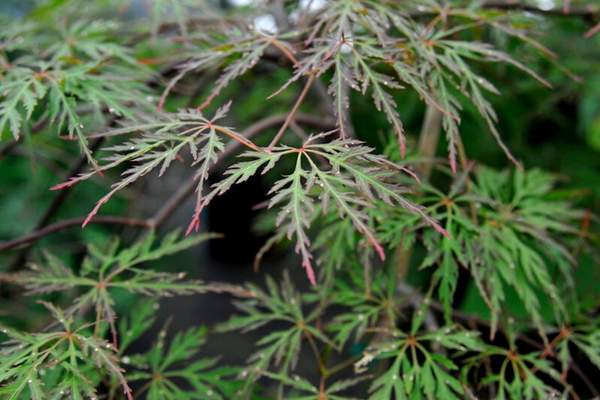
- Latin: Acer palmatum ‘Orangeola’
- Zone: 5-9
- Height: 8-13 ft
- Spread: 4-7 ft
- Sun: Full sun/partial shade
- Bloom color: Fiery red
- Maintenance: Low
Another maple tree that has a weeping habit is the Orangeola. It‘s medium in size and grows best in loam, sand, or clay soils. If you want an Orangeola to reach its full potential, make sure to water it twice a week and prune it twice a year.
These trees can grow up to 13 feet tall and have green and orange leaves in the spring that turn fiery red in the fall. During the autumn season, it produces small red flowers that mature into fruits.
7. Inaba shidare lace leaf
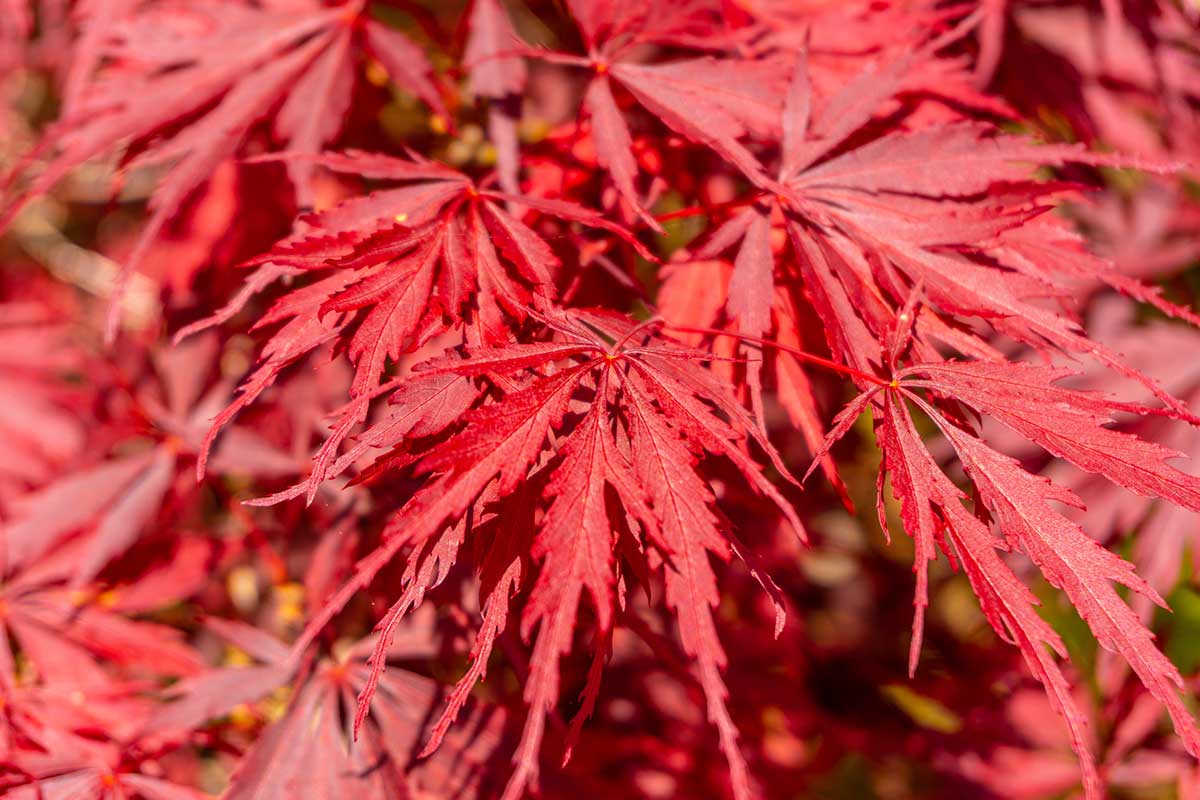
- Latin: Acer palmatum var. dissectum ‘Inaba-shidare’
- Zone: 5-9
- Height: 8-12 ft
- Spread: 10-15 ft
- Sun: Full sun/partial shade
- Bloom color: Bright red
- Maintenance: Low
The Inaba Shidare laceleaf maple is a lovely tree that you can train to grow as a bonsai. It’s native to Japan and thrives in USDA zones 5-9. It shares with other maple trees the distinctive trait of having leaves that change color with the seasons.
Its beautiful lacy leaves turn bright red in the fall and dark reddish purple leaves grow in the spring after shedding from the winter. This tree doesn’t require much maintenance, but it does require watering, especially during dry seasons.
8. Garnet
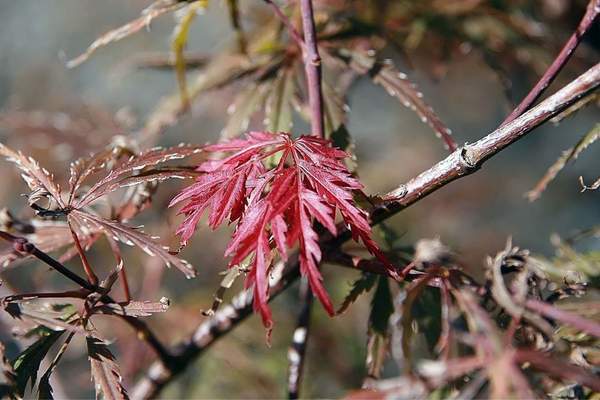
- Latin: Acer palmatum var. dissectum ‘Garnet’
- Zone: 5-9
- Height: 6-8 ft
- Spread: 8-12 ft
- Sun: Partial shade
- Bloom color: Red-orange
- Maintenance: Low
The garnet tree is remarkably resilient. It can withstand harsh weather conditions such as cold temperatures and grows best in humid environments. Keep this tree watered at all times because low humidity will cause it to wither.
This tree has a red-orange color in the spring, contrasting beautifully with the green leaves. During the autumn season, the leaves are also prone to changing colors. They turn red in the fall before falling off the tree to make way for new growth once winter is over.
9. Weeping viridis
- Latin: Acer p. dissectum Viridis
- Zone: 5-8
- Height: 6-8 ft
- Spread: 6-10 ft.
- Sun: Full sun/partial shade
- Bloom color: Dark red
- Maintenance: Low
Weeping viridus is a beautiful and unique tree that you don’t see very often. It has an unusual shape and beautiful deep green leaves that change to bright golden yellow to orange in the spring and darker reddish hues in the autumn, making it stand out in any garden.
This tree thrives in full sun to partial shade and requires moderate watering. It can live for up to 60 years or more if properly cared for, but this tree doesn’t require much maintenance.
10. Cutleaf
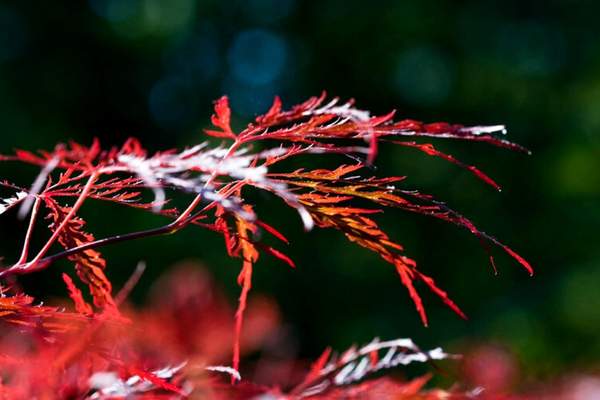
- Latin: Var. dissectum
- Zone: 5-9
- Height: 3-9 ft
- Spread: 8-10 ft
- Sun: Full sun/partial shade
- Bloom color: Red/orange/yellow.
- Maintenance: Low
Cutleaf Maple is a lovely tree that grows well in most climates but thrives in areas with rich soils. Because of its stunning red color, it’s a popular choice among homeowners and landscapers alike.
The tree has an unusual leaf growth pattern that is best described by its name: cutleaf. The leaves are deeply lobed and cut all the way to the petiole. Cutleaf Maple’s deep lobing makes it especially beautiful in the fall, when it turns brilliant shades of red, orange, and yellow.
11. Weeping tamukeyama
- Latin: Acer palmatum dissectum ‘Tamukeyama’
- Zone: 5-8
- Height: 6-10 Feet
- Spread: 10-12 Feet
- Sun: Full sun/partial shade
- Bloom color: Burgundy
- Maintenance: Low
If you want to add some color and interest to your yard, weeping tamukeyama trees are a lovely option. They typically grow well in areas with rich soil conditions in the United States.
The branches of these trees hang down from the trunk and have lacy, petite leaves. The leaves are a deep purple color that can be seen all season. However, it will turn a bright red before losing its leaves in the winter.
12. Autumn moon
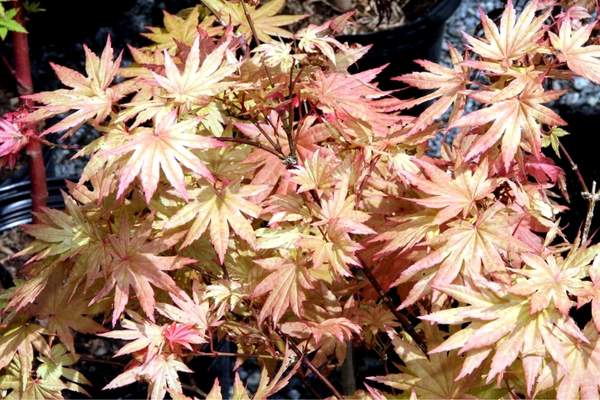
- Latin: Acer shirasawanum ‘Autumn Moon’
- Zone: 5-9
- Height: 8-12 ft
- Spread: 6-8 ft
- Sun: Full sun/partial shade
- Bloom color: reddish-orange
- Maintenance: Low
Autumn moon maple trees are among the most distinctive and beautiful trees you can grow in your yard. In the fall, their long, slender leaves turn yellow to reddish-orange. The leaves are also slightly curved, giving these trees a graceful appearance.
Autumn moon maples will thrive best in full sun and well-drained soil. They can be planted in zones 5-9 and require regular watering during dry periods. These beautiful trees are also best planted in the spring or early fall, before the leaves fall.
13. Emperor one
- Latin: Acer palmatum ‘Wolff’
- Zone: 5-9
- Height: 12-15 ft
- Spread: 12-15 ft
- Sun: Full sun/partial shade
- Bloom color: Red
- Maintenance: Low
Emperor One is a unique maple tree that thrives in the shade and can tolerate full sun exposure. It stands out in the fall when other leaves are turning orange or brown because it has been bred to have a deep red color in the spring and a bright red color in the fall.
This tree grows slowly and is best used as a focal point in a garden to add color to the landscape.
14. Full moon
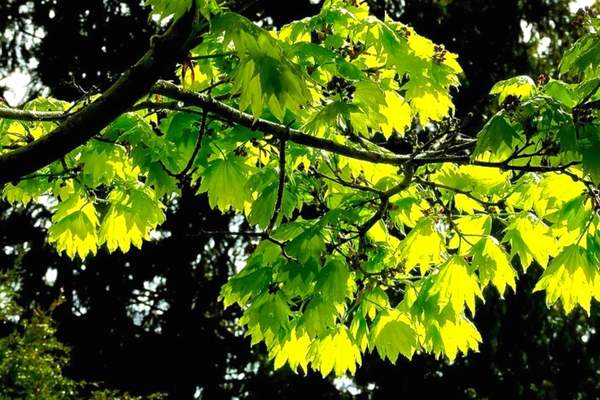
- Latin: Acer japonicum
- Zone: 5-7
- Height: 10-15 ft
- Spread: 10-15 ft
- Sun: Full sun/partial shade
- Bloom color: Purple/ red/orange/yellow
- Maintenance: Low
The growth habits and appearance of full moon trees are exceptional. They can grow up to 15 feet tall, with a 15-foot-wide rounded canopy. These trees thrive in full sunlight and moist, well-drained soil, just like other maple trees.
However, partial shade is preferred over full sun exposure to achieve the best leaf color. The leaves on these trees are 6 inches long. During the fall season, they change to shades of red, purple, orange, or yellow, making them an excellent choice for adding color to your garden.
15. Coonara pygmy
- Latin: Acer palmatum ‘Coonara Pygmy’
- Zone: 6-9
- Height: 4-6 ft
- Spread: 8 ft
- Sun: Full sun/partial shade
- Bloom color: yellow-orange/pink
- Maintenance: Low
The Coonara pygmy is an excellent choice for any garden. It’s ideal for bringing color and life to small spaces. This dwarf tree can only reach a height of 6 feet, and has a rounded crown, a short trunk, and dark green leaves.
The leaves are serrated and have jagged edges like teeth. In the fall, these leaves turn yellow-orange and pink to deep pink, and in the summer, they turn green with a splash of orange or red.
16. Green cascade
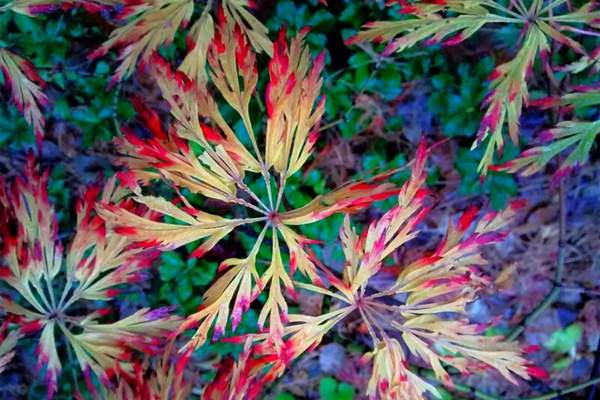
- Latin: Acer japonicum ‘Green Cascade’
- Zone: 5-9
- Height: 4-5 ft
- Spread: 6-8 ft
- Sun: Full sun/partial shade
- Bloom color: yellow,red
- Maintenance: Low
Green cascade is a maple tree that grows best in USDA zones 5 through 9. They’re small trees with a mature height of 5 feet and a spread of 8 feet.
Green cascades have a weeping habit and grow quickly, making them ideal for people who want large shade trees in their yards but don’t have the time to wait for them to mature. The leaves change color throughout the year, turning yellow or red in the fall.
17. Osakazuki
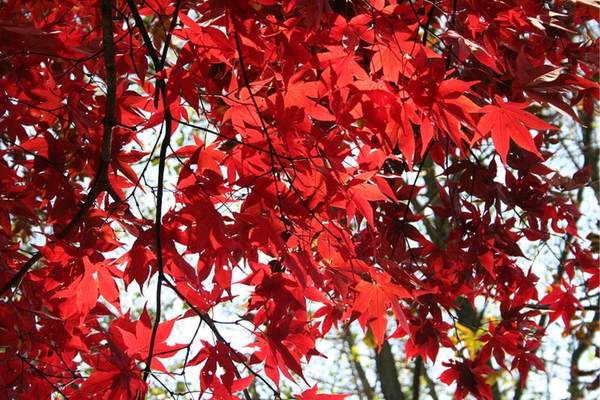
- Latin: Acer palmatum ‘Osakazuki’
- Zone: 5-9
- Height: 15-25 ft
- Spread: 10-15 ft
- Sun: Full sun/partial shade
- Bloom color: red/orange
- Maintenance: Low
Osakazuki are large maple trees native to southeast Korea, and central and southern Japan. They make an excellent shade tree and have beautiful red to orange leaves in the autumn.
These trees prefer full or partial sunlight and an environment with well-drained, rich soil. This tree’s leaves begin bright green to olive green in the spring and change to a slightly orange-tinged color in the summer.
18. Purple ghost
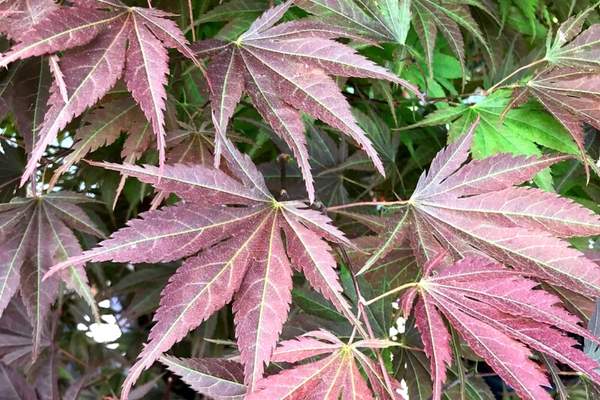
- Latin: Acer palmatum ‘Purple Ghost’
- Zone: 6-9
- Height: 8-10 ft
- Spread: 5-6 ft
- Sun: Full sun/partial shade
- Bloom color: Deep purple-red
- Maintenance: Low
If you want a maple tree with a distinguishable darker color, you should consider planting purple ghosts in your garden. Purple Ghost grows best in zones 6-9 and can reach a height of 10 feet with a spread of 6 feet.
During the spring, the tree produces deep purple leaves with black veins that stand out in any landscape. When the autumn season arrives, their leaves begin to turn burgundy to reddish-orange.
19. Sherwood flame
- Latin: Acer palmatum ‘Sherwood Flame’
- Zone: 5-8
- Height: 14-16 ft
- Spread: 12-14 ft
- Sun: Full sun/partial shade
- Bloom color: reddish-purple/scarlet
- Maintenance: Low
Sherwood flame trees are a lovely addition to any garden. They have a deep red-purple color that can be seen from a long distance, and they thrive in moist, sandy loam soil and full sun.
These trees have pointed, toothed leaves with 7–9 lobes. They also change color with the seasons, turning reddish purple in the summer and spring and shades of red in the autumn.
20. Green mist
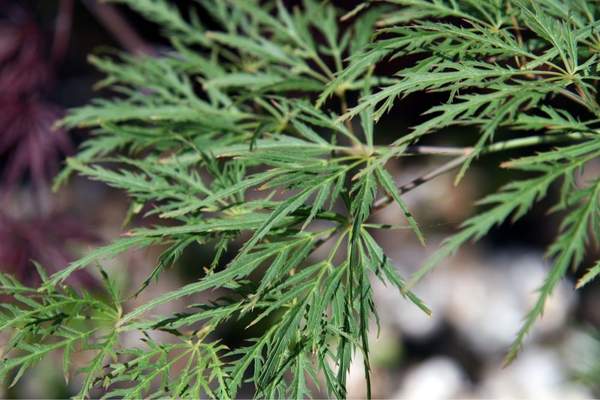
- Latin: Acer palmatum ‘Green Mist’
- Zone: 5-9
- Height: 7-12 ft
- Spread: 5-10 ft
- Sun: Full sun/partial shade
- Bloom color: light green/orange-red/ red
- Maintenance: Low
Green mist trees are a type of maple tree that grows best in areas with mild winters and warm summers. Many gardeners adore this tree because of its globe-shaped form and colorful leaves that change with the seasons.
They’re deciduous shrubs that shed their leaves in the winter and produce chartreuse leaves in the spring. During the autumn season, the leaves turn yellow, orange, and red.
21. Waterfall
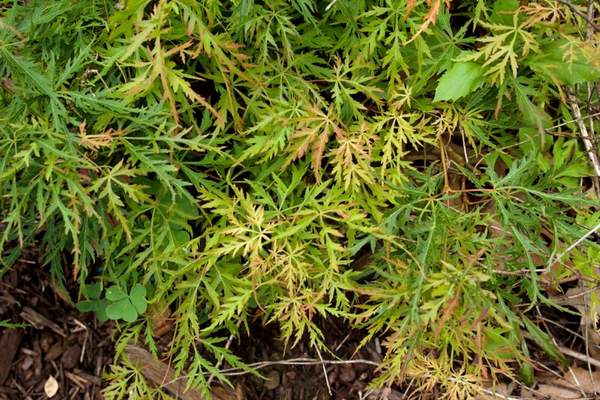
- Latin: Acer palmatum ‘Waterfall’
- Zone: 5-9
- Height: 6-12 ft
- Spread: 8-12 ft
- Sun: Full sun/partial shade
- Bloom color: yellow/orange/red
- Maintenance: Low
Waterfall Maple is a one-of-a-kind and beautiful tree that will add a lot of personality to your yard. This deciduous tree has bright green leaves in the spring that turn golden with red and orange streaks in the fall.
The tree grows best in zones 5 through 9, and it’s heat tolerant and requires full sun to thrive. It grows quickly and can reach 12 feet in height at maturity. Waterfall Maple gets its name from the way it hangs down like a waterfall.
